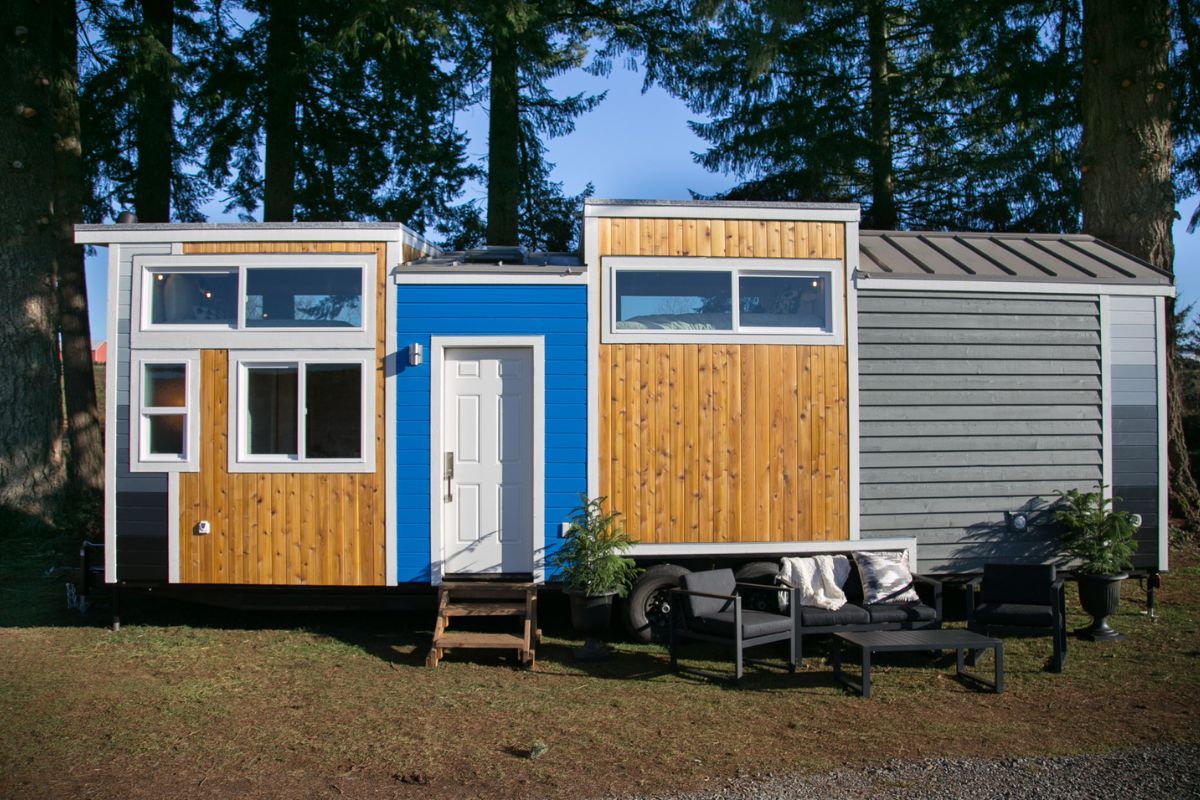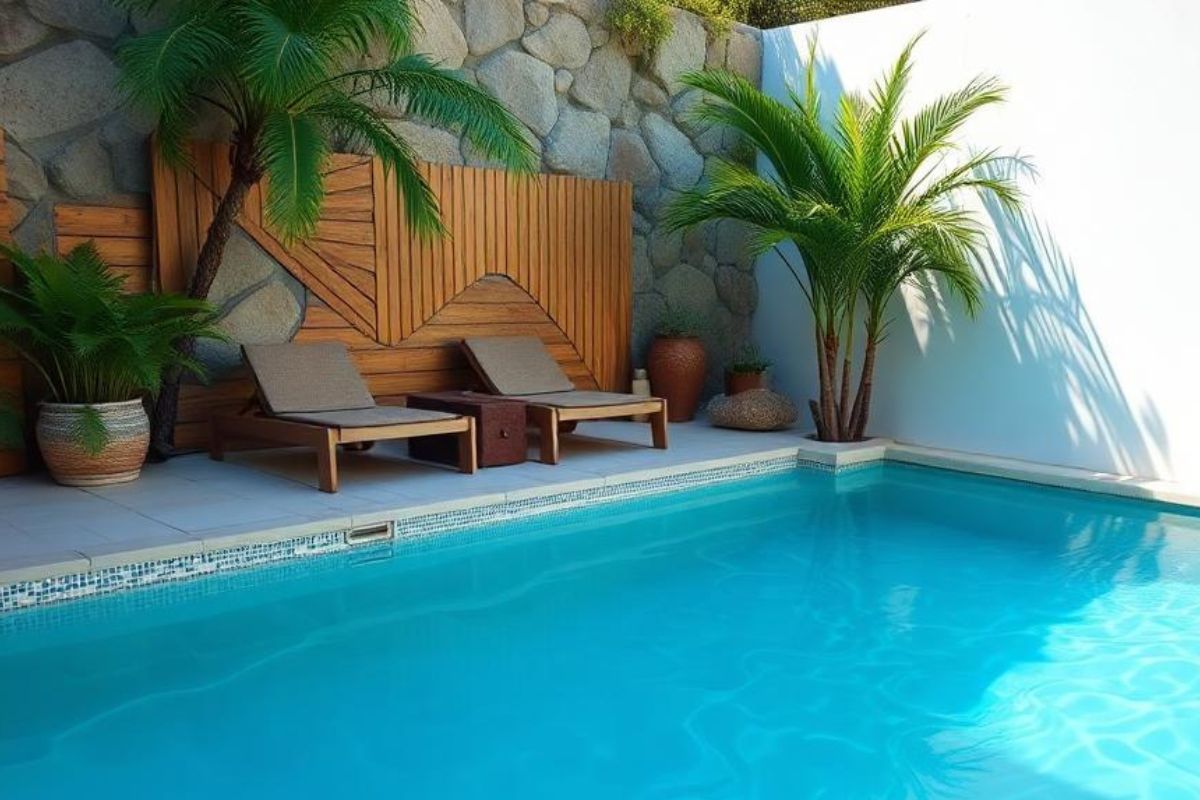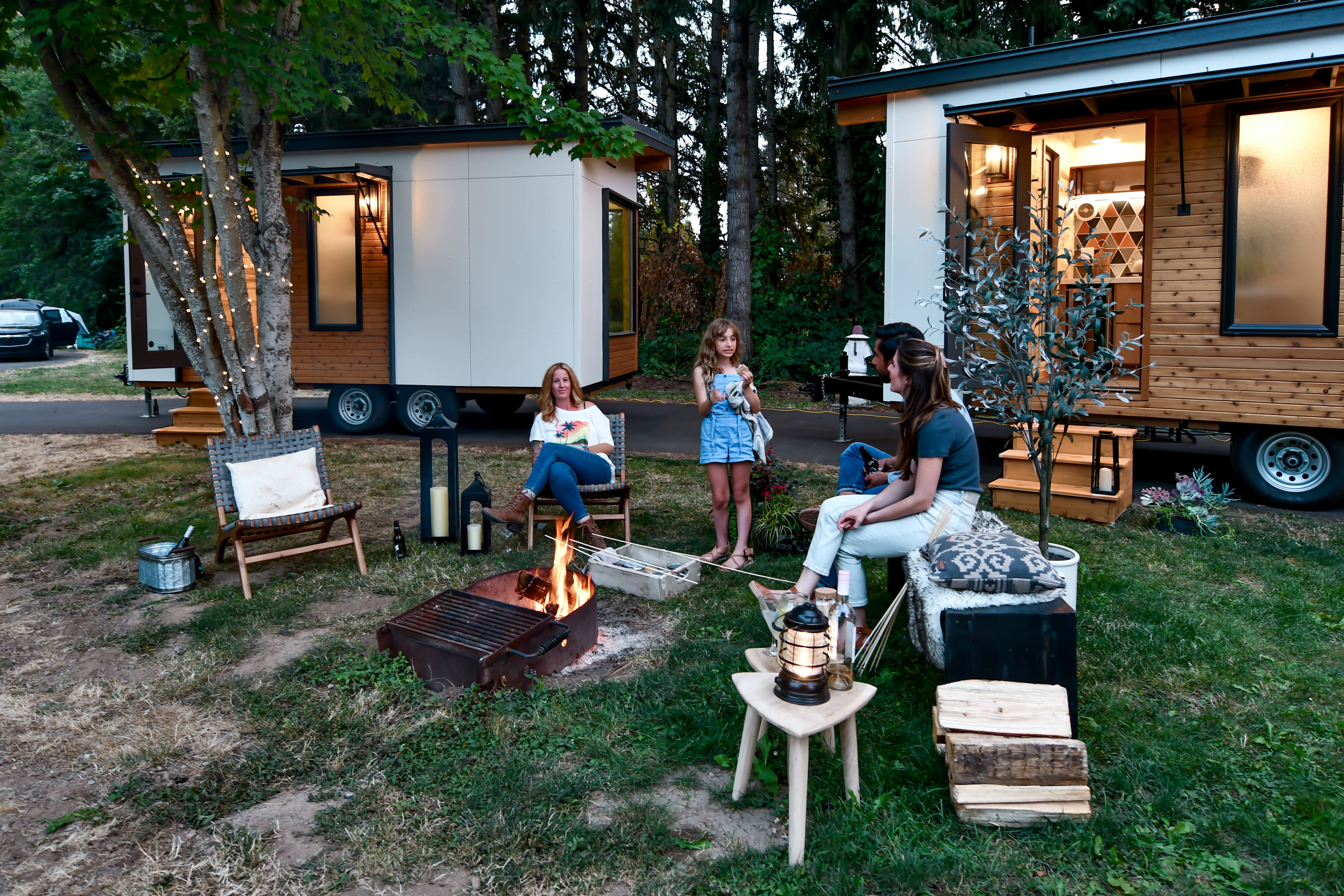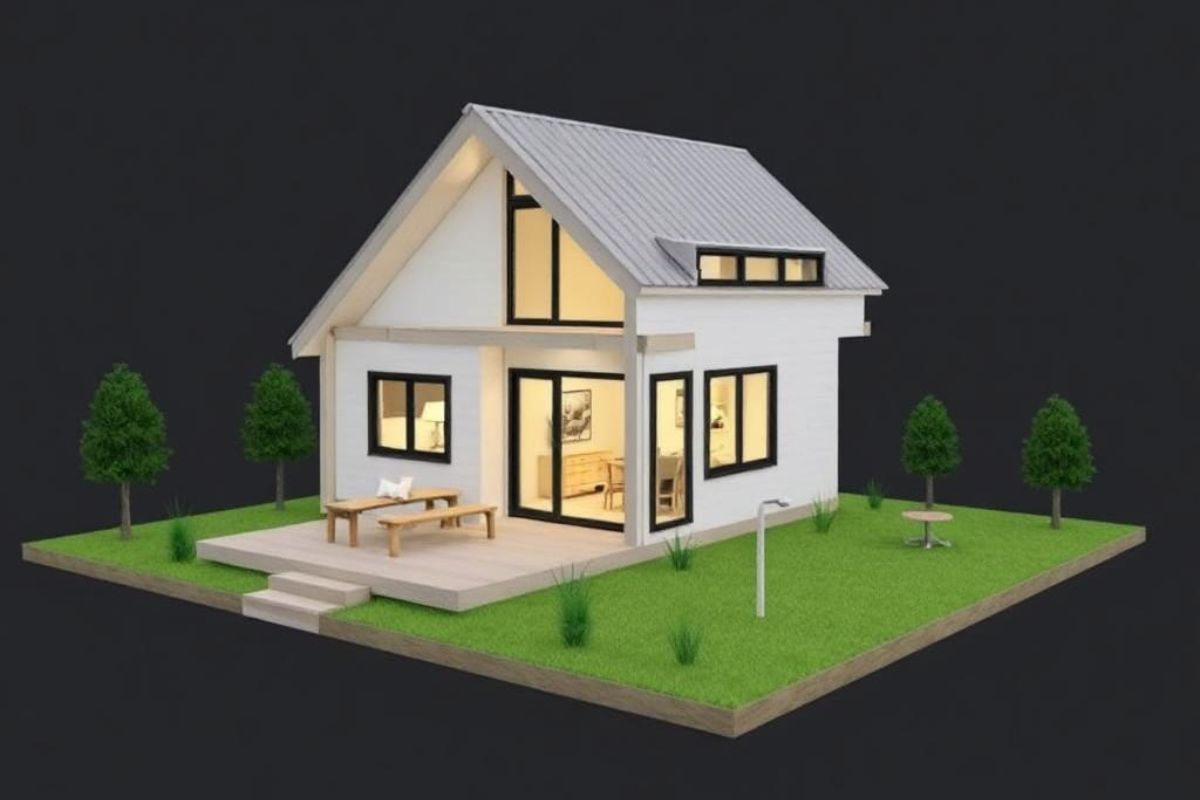Siding is of paramount importance in maintaining energy efficiency. They enhance the effects of your heater during the winter, and they keep the sun out in the summer.
To find out the best options for you, we interviewed Samuel Drysdale, the founder of Dallas Siding Pros.
If you’re staying in a tiny house, chances are, you’re either looking to be more eco-friendly or to keep costs down, or both.
Well, the good news is, energy-efficient siding achieves both.
By choosing siding options that are good insulators of heat, whatever the temperature is in your tiny home, it’ll help keep it at that temperature, which means your temperature control systems do less work, or may not even be needed at times.
This means not only is less energy and electricity used, but with lesser usage, your devices won’t need repair and replacement as often.
So while there may be slightly higher upfront costs than cheaper siding options that don’t insulate as well, over time, you’ll recover this investment through lower electricity bills and lower replacement and repair costs.
Alright, enough teasing. Let’s get started.
1. Metal
Metal definitely isn’t something many people would expect to be a good insulator of heat. And yes, metal on its own sure as heck isn’t.
However, with insulation panels, metal actually becomes a great insulator of heat.
In fact, it may be surprising to hear, but insulated metal actually insulates heat better than most other siding options.
The reason for this is that metal is pretty robust, so it can be relatively thin and still remain rigid and strong. As such, the insulation panels inside can be made thicker, and the metal on the outer layer can be thinner.

This natural rigidity is something that most other siding options don’t have, so even for materials that may naturally insulate better than metal, they can’t have as thick a layer of foam insulation inside as metal can. As such, metal beats most other insulated siding options.
Insulated metal is kind of like having a really thick layer of super insulating material inside, and then a thin layer of well-conducting material outside. Overall, it’s still extremely good at insulating heat.
Metal also brings a unique, sleek, modern visual that most materials can’t mimic.
And metal is also pretty sturdy. While metal is of course prone to corrosion, especially when not treated, it’s also very robust as long as it doens’t rust, and won’t require much maintenance.
The catch is that insulated metal is quite pricey. The thick layer of super insulating material inside is what makes insulated metal so expensive, but you are getting what you pay for, as insulted metal siding is one of the best insulating siding options.
2. Vinyl
Vinyl wasn’t always a good insulator of heat, but with the advance of technology, modern vinyl siding is usually made with insulation backing. This makes modern vinyl siding a relatively good insulator of heat.
Similar to with metal, the super insulating material inside helps boost the overall insulation by quite abit, making insulated vinyl siding a relatively good insulator of heat.
But vinyl, lacking the natural rigidity of metal, can’t have as thick of an inner insulating layer, so it’s a good insulator of heat, but not as good as insulated metal siding.
While vinyl still isn’t one of the best insulators, it does offer great value for money though, doing a good job of insulation while being very affordable and low-maintenance.
As such, vinyl is one of the most popular siding options.
Vinyl is also one of the most versatile siding options, and can be made to look like wood, stone, bricks, stucco, and so on.
3. Fiber Cement
As you’d expect from cement and sand, fiber cement doesn’t conduct heat well. And being cement and sand, it’s pretty durable and able to stand up to harsh conditions, making them a great option for areas with more extreme climates.
Fiber cement also has a long lifespan, and is highly resistant to pests and rot.
The only drawback is that fiber cement is one of the more pricey options, mainly because both the material itself and installation costs are higher due to their weight and density. It’s still cheaper than insulated metal siding though.
Plus, this is a worthwhile investment that will more than pay for itself eventually. It’s also very tough, so you won’t be needing too many repairs, and any repairs needed are usually minor, which further helps mitage its higher costs over time.
Fiber cement is also pretty versatile, and you can customize it to look like wood, stone, and more, so design-wise, fiber cement is quite flexible.
So fiber cement may not insulate as well as insulated metal does, but it fares better in harsh climates, and is cheaper.
4. Wood
Finally, wood isn’t exactly a super good insulator of heat, but it does a good job in its natural form.
In terms of insulation, wood is actually the worst out of the options here. It’s also more pricey than insulated vinyl, which is the most affordable option, and more prone to rot and pest infestations.

So you’re probably wondering why anyone would ever choose wood over insulated vinyl siding.
Well, for one, wood is a natural, renewable resource, which means it’s more environmentally friendly.
For another, the natural look of wood is hard to replicate completely. While versatile materials like vinyl and fiber cement can mimic it, they can’t replicate it fully. So if you want that natural look for your tiny home, wood is your best bet.
Final Tips
No matter which siding option you end up choosing, remember that siding along, no matter how well it insulates, isn’t enough.
You need additional insulation in the interior of your tiny house to go hand in hand with the siding to effectively insulate your tiny home.
Most newly-built tiny houses have this down, but older ones may not, and if you’re building your own, make sure not to overlook this.
So there you have it, the four best siding options to keep your tiny home insulated well.






Share: